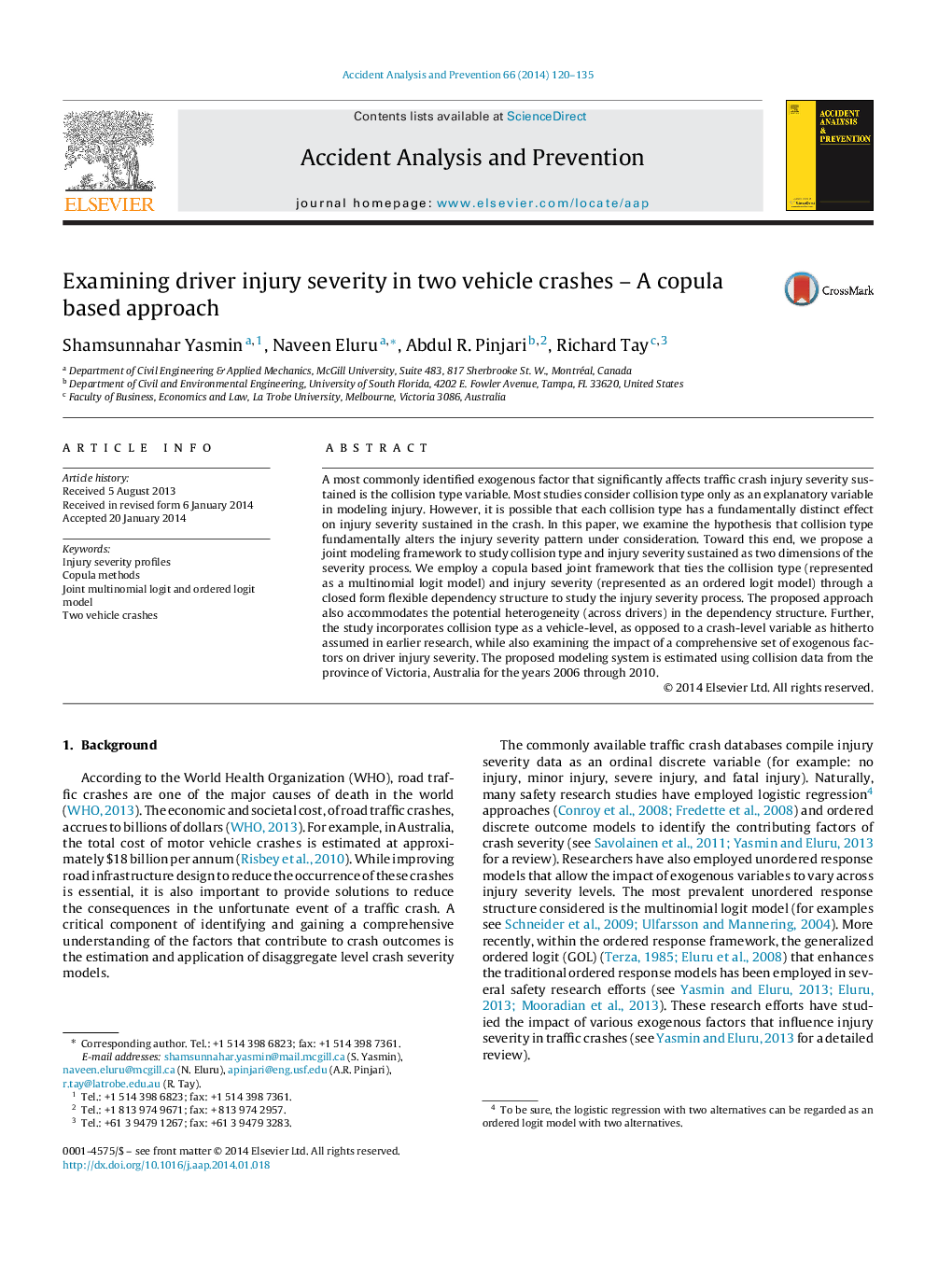| Article ID | Journal | Published Year | Pages | File Type |
|---|---|---|---|---|
| 572376 | Accident Analysis & Prevention | 2014 | 16 Pages |
•We define collision type variable as a vehicle specific characteristic.•We propose and estimate a joint model for collision type and injury severity.•The joint model takes the form of a copula based multinomial logit and ordered logit model.•The copula dependency parameter is parameterized to allow for distinct dependency profiles across the population.
A most commonly identified exogenous factor that significantly affects traffic crash injury severity sustained is the collision type variable. Most studies consider collision type only as an explanatory variable in modeling injury. However, it is possible that each collision type has a fundamentally distinct effect on injury severity sustained in the crash. In this paper, we examine the hypothesis that collision type fundamentally alters the injury severity pattern under consideration. Toward this end, we propose a joint modeling framework to study collision type and injury severity sustained as two dimensions of the severity process. We employ a copula based joint framework that ties the collision type (represented as a multinomial logit model) and injury severity (represented as an ordered logit model) through a closed form flexible dependency structure to study the injury severity process. The proposed approach also accommodates the potential heterogeneity (across drivers) in the dependency structure. Further, the study incorporates collision type as a vehicle-level, as opposed to a crash-level variable as hitherto assumed in earlier research, while also examining the impact of a comprehensive set of exogenous factors on driver injury severity. The proposed modeling system is estimated using collision data from the province of Victoria, Australia for the years 2006 through 2010.
